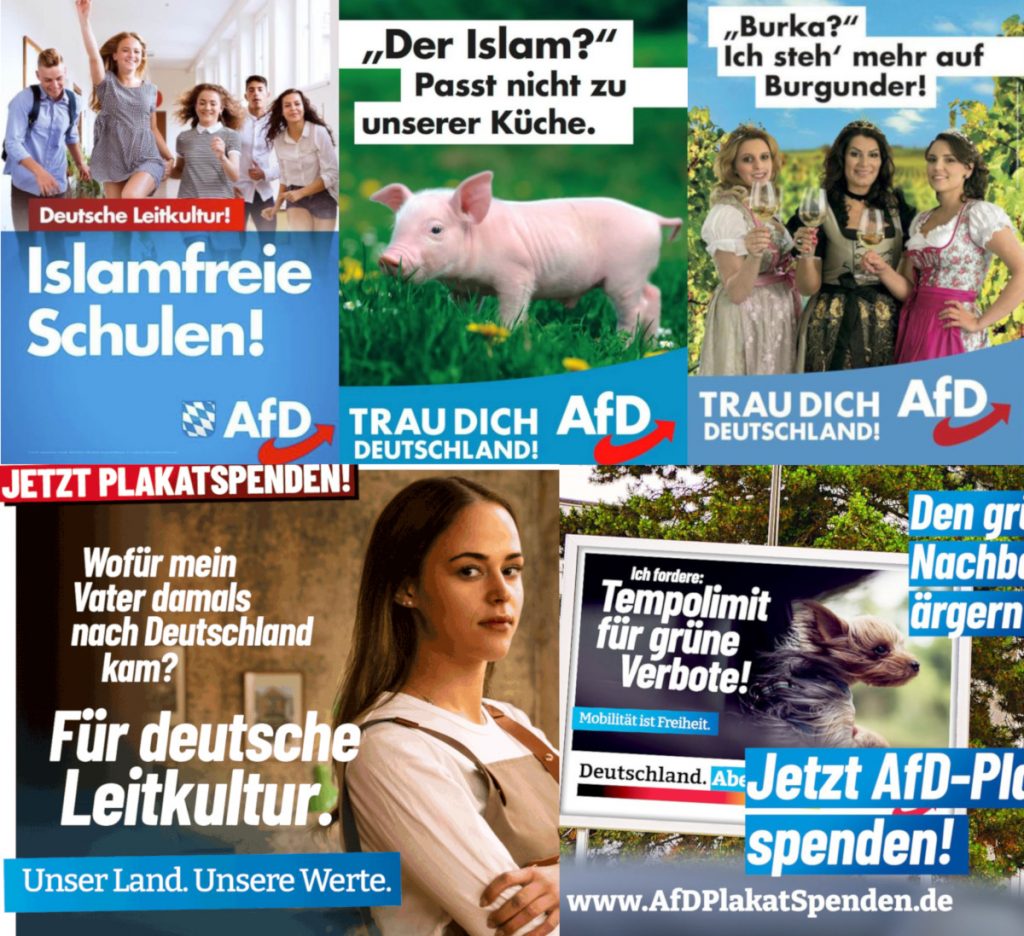At the last German federal election in 2017, the Alternative for Germany (AfD) attracted headlines for its hardline stance against immigration. Michael A. Hansen writes that while the party has published a similar manifesto ahead of the 2021 federal election, there has been a noticeable shift toward a more moderate campaigning style.
For much of the postwar period, populist radical right parties have had little success in German politics. However, this all changed with the rise of the Alternative for Germany (AfD). The AfD was founded in 2013 in reaction to the Eurozone crisis and subsequent Eurozone policies (i.e., bailouts). The party was mostly comprised of economic liberals, conservatives, and right-wing nationalists.
As a single-issue Eurosceptic party, the AfD won just under two percent of the vote in its first contested federal election in 2013. Following the result of the 2013 election, the AfD began to shift their ideology further towards the right of the political spectrum and expand the number of issue positions they promoted. As the AfD started to shift right and move away from being a single-issue party, it began to obtain notable success in state elections.
In the 2017 federal election, the AfD was able to obtain 12.6 percent of the vote and 94 seats, making it the third largest political party in parliament. The AfD’s achievement bucked longstanding historical trends of far-right political failure and has led to a massive proliferation of research on the party’s supporters, as well as the AfD’s political appeal.
The AfD and the 2017 election
In a recent study, co-authored with Jonathan Olsen, we found that vote choice in the 2017 election was not explained by a specific socio-demographic profile. Nor did we find evidence for the idea that AfD voters were primarily ‘losers from modernisation.’ Instead, AfD voters tended to have negative attitudes towards democracy, and most importantly, they harboured strong negative attitudes towards immigrants and refugees. Citizens that cast their vote for the AfD appeared to be strongly motivated to support the party due to its xenophobic position. In fact, in a more recent study, also co-authored with Jonathan Olsen, we found that among second and third generation immigrants that voted for the AfD in 2017, the predominate predictor was hostility towards new groups of immigrants/refugees.
The AfD’s strategy of taking advantage of the 2015-16 refugee crisis and winning votes from German citizens that hold xenophobic attitudes was apparent in their campaign advertising. The 2017 campaign was assisted by a U.S. based firm linked to the Republican Party and contained messages that were direct, controversial, and intended to appeal to voters that held more extreme right attitudes. The party’s campaign posters specifically targeted Islam and immigrants more generally. For example, one advertisement displayed women in bikinis with text that read, ‘Burkas? we prefer bikinis’ (Burkas? Wir Steh’n auf Bikinis). Another advertisement contained a picture of a pig and stated, ‘Islam? It doesn’t fit in with our cuisine’ (Der Islam? Paast niche zu unserer Küche).
In an attempt to link immigration, terror attacks, and Angela Merkel, the party also created an advertisement that displayed tire tracks across Europe with city names and the number of deaths from terror attacks with the text, ‘The tracks left by the world chancellor in Europe’ (Die Spur der Welt-Kanzlerin durch Europa). A campaign poster that more broadly targeted immigration contained a photo of a pregnant woman lying in the grass with the text, ‘New Germans? We’ll make them ourselves.’ (Neue Deutsche? Machen wir selber). The overwhelming majority of campaign ads widely disseminated in the 2017 election contained these direct xenophobic messages.
A party broadening its appeal?
With the 2021 federal election being held on 26 September, the question remains whether the AfD can broaden its appeal and secure an increase in support. While the 2017 election result was considered a success for the AfD, to achieve a higher probability of impacting public policy, the party will need to win a higher share of votes.
For the 2021 election, the party has published a similar party manifesto to the one they used in the 2017 election, which includes a diverse set of issue positions. In comparison, the campaign advertisements that the AfD has disseminated so far are suggestive of a populist radical right party that is attempting to broaden its appeal to voters. The issues that the AfD’s campaign posters touch on include a wide array of social topics such as freedom, crime, immigration, rural area issues, green energy, jobs, Covid-19, retirement, gender equality, and self-employment.
Figure: AfD campaign posters (2017-21)
Note: The posters in the top row were published in advance of the 2017 German federal election, while those in the bottom row were published prior to the 2021 federal election. Credit: AfD
For instance, one advertisement contains a woman working at a computer with the text, ‘Do they call me “solo self-employed” because the state always leaves me alone?’ (Nennt man mich “Solo-Selbständig” weil mich der staat immer alleine lässt?) Below the picture and text the poster states, ‘promoting entrepreneurship’ (unternehmertum fördern). Even their campaign poster that specifically targets immigrants appears to take a less direct and combative approach when compared to the advertisements of the 2017 campaign. The poster shows a woman with the text, “What did my father come to Germany for? For German leading culture. Our country. Our values.” (Wofür mein Vater damals nach Deutschland Kam? Für deutsche Leitkultur. Unser land. Unsere Werte.). This advertisement aligns with party members’ claims that they are not a strictly anti-immigrant party.
Is this less aggressive and less controversial campaign strategy likely to be successful? At the moment, there is little evidence the approach is working. Polling currently has the AfD around 11 to 12%, which is similar to the result of the 2017 federal election. If the polling results match the final election result, one takeaway will be that the AfD has found a segment of society from whom they are able to draw fairly consistent support, though it would be an open question how long that segment will continue to support the party without policy results.
Another takeaway, however, would be that an even larger segment of society does not view the AfD as a viable option and that the more moderate approach it has pursued has not been enough to shed the radical right populist label. Indeed, it would not be surprising if the controversial campaign advertisements and party member statements of the past are still at the forefront of people’s minds when evaluating the AfD.
Note: This article gives the views of the author, not the position of EUROPP – European Politics and Policy or the London School of Economics. Featured image credit: AfD





